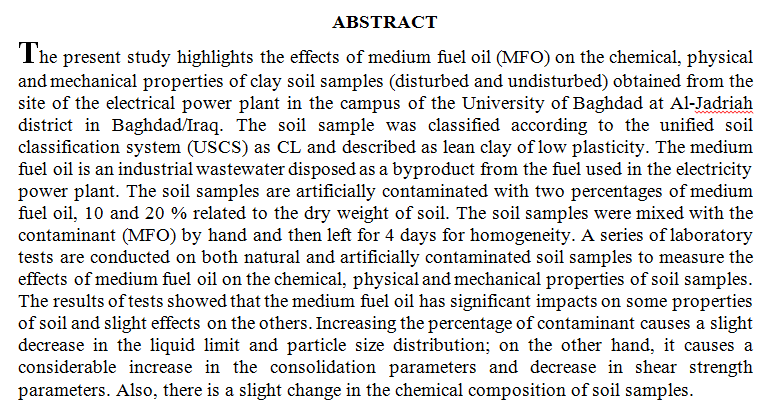
This paper deals with prediction the effect of soil re-moulding (smear) on the ultimate bearing capacity of driven piles. The proposed method based on detecting the decrease in ultimate bearing capacity of the pile shaft (excluding the share of pile tip) after sliding downward. This was done via conducting an experimental study on three installed R.C piles in a sandy clayey silt soil. The piles were installed so that a gap space is left between its tip and the base of borehole. The piles were tested for ultimate bearing capacity according to ASTM D1143 in three stages. Between each two stages the pile was jacked inside the borehole until a sliding of about 200mm is achieved to simulate the soil re-moulding due to actual pile driving. The re
... Show MoreThin films of Zinc Selenide ZnSe have been prepared by using thermal evaporation in vacuum technique (10-5Torr) with thickness (1000, 2700, 4000) A0 and change electrode material and deposited on glass substrates with temperature (373K) and study some electrical properties at this temperature . The graphs shows linear relation between current and voltage and the results have shown increases in the value of current and electrical conductivity with increase thickness and change electrode material from Aluminum to Copper
In this work, ZnO nanostructures for powder ZnO were synthesized by Hydrothermal Method. Size and shape of ZnO nanostructureas can be controlled by change ammonia concentration. In the preparation of ZnO nanostructure, zinc nitrate hexahydrate [Zn(NO3)2·6H2O] was used as a precursor. The structure and morphology of ZnO nanostructure have been characterized by scanning electron microscopy (SEM), atomic force microscopy (AFM), X-ray diffraction (XRD). The synthesized ZnO nanostructures have a hexagonal wurtzite structure. Also using Zeta potential and Particle Size Analyzers and size distribution of the ZnO powder
 (1)
(1)
Concrete is widely used in construction materials since early 1800's. It has been known that concrete is weak in tension, so it requires some addition materials to have ductile behavior and enhance its tensile strength and strain capacity to improve their uses. In this study reactive powder concrete (RPC) was used with steel fiber by using different types of cement; (Ordinary Portland cement (OPC) and/or Portland- Limestone cement (PLC)) with three types of mixtures (OPC at the first mix, 50 % OPC and 50 % PLC at the second mix and PLC at the third mix). The behavior of RPC with steel fibers on compressive strength and tensile strength of concrete with different ages of curing (7, 14, 28 and 60) days and shrinkage have been studied. The clo
... Show More (8)
(8)
Thin films of CdS:Cu were deposited onto glass substrate temperature 400 °c. The optieal properties have been studied for Cds doped with (1,3, 8) wt% of Cu before and after Gamma irradiation. It was found that the irradiation caused an ( Frenkel defects) where the atom is displaced from its original site leaving vacancy and forming on interstitial atom. It was found the irradiation caused an absorption edge shifting towards long wavelength as a result of the increasing of Cu concentration.
Results of a study of alloys and films with various Pb content have been reported and discussed. Films of of thickness 1.5
 (1)
(1)
 (2)
(2)
Transportability refers to the ease with which people, goods, or services may be transferred. When transportability is high, distance becomes less of a limitation for activities. Transportation networks are frequently represented by a set of locations and a set of links that indicate the connections between those places which is usually called network topology. Hence, each transmission network has a unique topology that distinguishes its structure. The most essential components of such a framework are the network architecture and the connection level. This research aims to demonstrate the efficiency of the road network in the Al-Karrada area which is located in the Baghdad city. The analysis based on a quantitative evaluation using graph th
... Show MoreKnowledge of the distribution of the rock mechanical properties along the depth of the wells is an important task for many applications related to reservoir geomechanics. Such these applications are wellbore stability analysis, hydraulic fracturing, reservoir compaction and subsidence, sand production, and fault reactivation. A major challenge with determining the rock mechanical properties is that they are not directly measured at the wellbore. They can be only sampled at well location using rock testing. Furthermore, the core analysis provides discrete data measurements for specific depth as well as it is often available only for a few wells in a field of interest. This study presents a methodology to generate synthetic-geomechani
... Show More (1)
(1)
